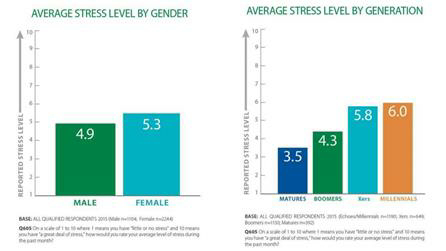OPINION MINING & JUDGEMENT ERRORS
(Artificial Intelligence Series)
Video link for this article:
Products
How do we judge any given product? Without understanding this, training a machine to analyze huge chunks of data and generate results – be it a Recommender System or a UX dashboard; the value to effort ratio remains below unity. We have tried everything from the basic “queuing theory” to “gamification” and even the “hyper-game theory”, but still struggle to find the golden ratio. In an ideal scenario, the following equation will hold good:
When emotions overtake the intellect fueling our experience for the cause or reason-to-believe that goes beyond the expectation of the product itself, we make the decision to buy. Whether it is a need or a want, whether it is justified or not, whether it comes with a positive or negative feeling (e.g. vaccination is received out of fear), people buy something if and only if the perceived value is greater than the perceived effort. Great marketers and advertisers know this too well and they constantly exploit the emotions to evoke the decision to buy.
Just look at the film industry and compare the movie reviews from the pre-covid and post-covid eras. Until two years ago, when the public could watch their choice of movie inside a theatre, their review would mostly largely positive where even mediocre movies would gain 3.5-4 stars on a scale of 5. Post-covid, when people are able to watch movies mostly on the OTT platform, their reviews have become more critical where everyone is seeking for quality content amidst binge-watching. Many starrer movies are being rated below 3 stars and seemingly underdog movies are being rated higher. The reason for this shift is that the pandemic has bitten into the overall “movie-going” experience, thereby letting the watchers use their intellect more rather than being swayed by their emotions that were previously being fueled with anticipation via teasers, trailers, promotions, campaigns and advertisements.
Thus, no amount of “sentiment analysis” of movie review data can predict anything with accuracy; without understanding the basic premise or context.
Processes
What happens before any output is generated? If we do not understand the process behind a given outcome, we are playing a “trial-and-error” game. Obviously one can’t play a game where the rules, the stakes and the quitting time remain unknown. This is one of the main reasons that domain knowledge is an absolute pre-requisite for delivering any kind of technological solution viz. machine learning in the current context. Understanding a process involves going beyond the process itself, as shown below:
With the kind of technological advancement we have today, one can create a robotic bartender and automate the process of serving drinks at the local pub. But, without considering a “process approach” that includes the process, the environment, the human factor and other variables, one will end up with nothing more than a “talking vending machine”.
Training a machine simply by mimicking what a human being does, does not add any value to the process per se. If your algorithm can either augment or compliment what a human being or an existing machine can, then it is definitely worth it to take the leap forward. This is the main reason as to why the adoption of “Conversational AI” like chat-bots, digital assistant, etc. has not picked up on a massive scale. I know that many AI enthusiasts and experts will disagree with me and probably refer to several hypotheses and modern theories like AGI, ASI, Swarm Intelligence, etc.; but the harsh truth is that we are centuries far from it.
People
Why do people perceive something the way they do? The world we are living in today is primarily system-driven, be it the rule of democracy or online shopping. That’s what most of us are made to believe. But, if you do a reality check at the grassroots level, everything depends on people. End of the day, it is people who affect both processes and products, either directly or indirectly. Organizations with the best processes and products in place can fail if it is not support by the right kind of people. In terms of leadership, people factor is of prime importance.
For the sake of our understanding, if we ignore the Fortune 500 list; all other companies including startups and SMEs heavily and solely depend on their leadership structure for their success, growth and / or survival. So, when it comes to selection of leaders or rewarding top performers, people make huge judgmental errors. Similar to management of products and processes, there are numerous theories for people management like BEI (Behavioral Event Interviewing), Psychometrics, Adam’s Equity Theory, Hertzberg’s Motivation Theory, Jay Hall Conflict Management Theory, etc.
Most of these judgmental errors can be attributed to the misunderstanding of two most basic theories:
Dunning-Kruger Effect – A hypothetical cognitive bias stating people with low ability at a task overestimate their ability.
Imposter Syndrome – A psychological pattern of perceived fraudulence, where an individual doubts his / her skills, talents, or accomplishments despite having external evidence of competence.
It is simply illogical to compare Guy Martin (famous pit stop wheel changer) with Michael Schumacher (famous F1 racer). If one were to get into their minds, Guy would be found suffering from the Imposter Syndrome and Michael Schumacher facing the Dunning-Kruger Effect. Now, if one were to reverse their roles, what would be the effect? While this may seem to be an extreme example; such scenarios occur often in our day-to-day routines. An example that everyone can relate to is your appraisals. More than the actual ability and past performance, more weightage is given to attitude. Those who rate themselves high during self-appraisal are the ones who usually get the highest rating in the final appraisal. The fact remains that the lot who hold themselves in high esteem and exuberate confidence are actually part of the Dunning-Kruger Effect, while those who are self-doubtful lie somewhere in the Imposter Syndrome region.
Thus when it comes to people analytics or consumer research, even the best of experts can go wrong when the primary data is based on opinions prone to judgment errors.
The following quote sums up my point too well:
Summarizing the whole article, I can say that the following factors need to be accounted for before embarking on a decision-making journey based on analytics:
Value created or projected (product-centric)
Variables both known and unknown (process-based)
Viewpoint of everyone involved (people-centric)
I help improve people, processes and products.. Reach out to me to know more. 🙂



































